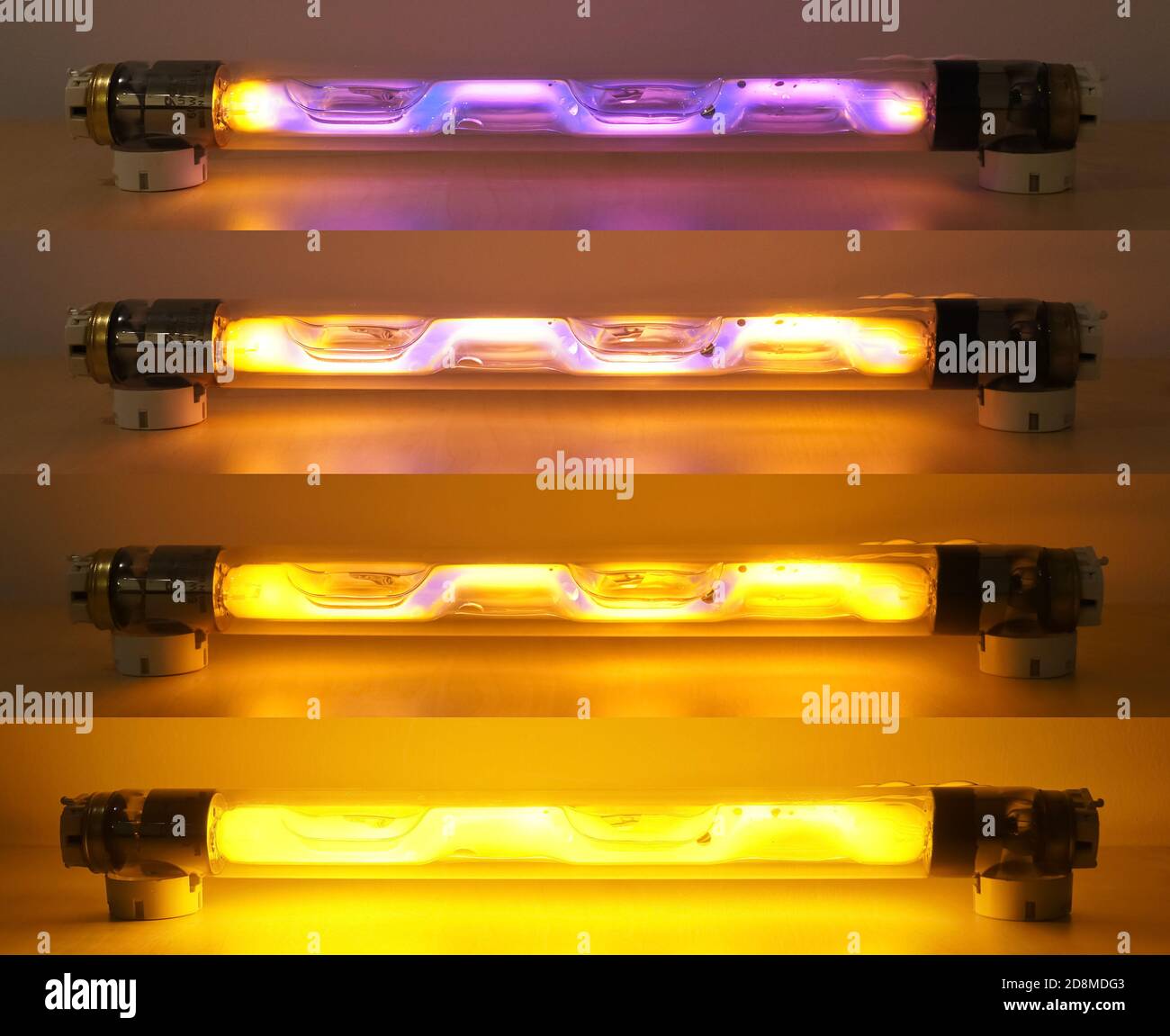The design feature of sodium lamps is a bright, economical light supply for large areas. For the formation of a dense luminous flux does not require special conditions. Products are of high quality at low energy costs. HPS sodium lamps differ in characteristics that should be considered before installation.
Design features
The basis of the working process of the sodium device is an arc discharge. The impulse voltage that occurs in the inner tube leads to the formation of a saturated light flux. The gaseous medium formed in the product is formed due to sodium vapor, so the predominant spectral color is red. The peculiarity of the devices affects the shade of the outgoing light, which can be orange, yellow, red in different shades.
During use, the outer bulb of the lamp heats up to a temperature of about 100 °C.
Immediately after switching on, sodium lamps give off a dim, weak light, as the energy is spent on preheating the working burner. It takes 15 minutes to reach the required brightness.
Classification
Separation depends on the strength of the internal pressure in sodium lamps. In the presence of a low indicator, the products are called low-pressure sodium lamps (NLND), high – NLVD.
Each of the categories is endowed with its own advantages and disadvantages, which should be taken into account when choosing a device for specific operating conditions.
Characteristics of NLND
Products with low internal pressure have a number of features:
Flask material. The shell is made of borosilicate durable material, not glass. The glass surface does not withstand exposure to sodium vapor.
At the end of the service life, the product begins to emit light in red spectral shades.
Dependence on external temperature. Optimum conditions of use are achieved by placing the lamp in a glass shell, which acts as a thermos and protects the lamp from negative factors.
Description of NLVD
There are several types of high pressure sodium devices:
DNaT – refer to standard arc lamps with a bright luminous flux. One device is enough to illuminate a small garden area.
DNaZ – has a mirror reflective layer located on the inner surface of the flask. Despite the low power, brightness is achieved due to the mirror coating and sintered electrodes located inside. The device has a high efficiency at low energy costs.
DRI, DRIZ are suitable lighting devices for greenhouse conditions. They are not afraid of temperature, energy surges, have a high level of productivity and optimal luminescence for favorable plant growth. However, it must be borne in mind that they require a special cartridge and the price of these lamps is high.
Scope of devices
Sodium lamps have poor color accuracy, so their use in residential areas is irrational. When lighting the local area, this parameter does not matter, so NL are often used for these purposes.
Devices are often found in mechanical engineering, where it is required to equip a car with bright headlights for driving in poor visibility conditions (fog, rain, snow).
With the help of sodium modules, economical power consumption is ensured when lighting park areas, suburban highways, highways, highways, city avenues. With the help of devices, additional lighting is created for some objects. This:
architectural monuments, historically significant objects;
tunnels, areas for placing containers and sports;
airports, railway stations and other public places where people stay for a short period of time;
production shops, warehouses where high quality lighting is not required;
places for increasing plant growth, creating full-fledged conditions for the development of plantations in the cold season, or in an unfavorable climate.
The task of the NL is to provide the necessary level of light with minimal electrical energy consumption.
